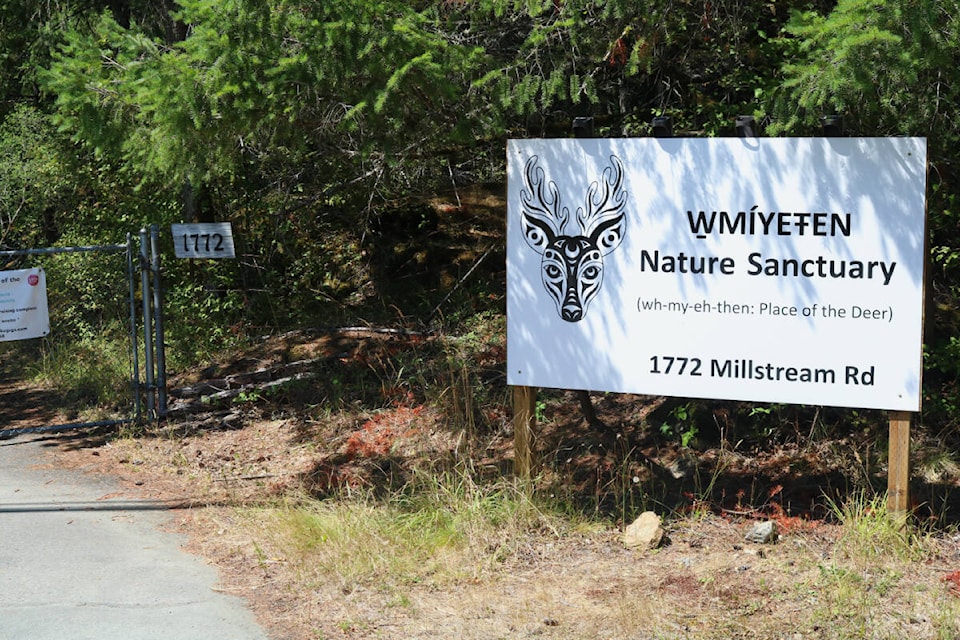Tucked into the thick forests of the Highlands, a sanctuary for conservation and healing has been created.
The Mary Lake property has long been a focus for local conservation groups looking to preserve the area. Before then, Indigenous Peoples were coming to the area to engage in cultural and spiritual practices.
Now, working in concert with a group of WSANEC matriarchs and elders, the Greater Victoria Greenbelt Society hopes to unite those two purposes and has renamed the area WMIYETEN Nature Sanctuary, meaning “place of the deer.”
The area, on May 28, was also designated as a natural sacred site for Indigenous cultural and spiritual practices, giving Mary Lake the SENCOTEN name XAXOCE EETE XOCETENOT, which translates to “the sacred lake of the sacred woman.”
“Every tribe here in this part of the world always found a place where they could go to help themselves physically and spiritually. Mostly spiritually, because if you don’t have that, then nothing matters,” said Tsartlip Elder Tom Sampson.
Sampson hoped the area will be a place of healing for those who have been impacted by missing and murdered Indigenous women and girls.
As well as spiritual healing, the land has ecological importance. Making it a sanctuary helps protect the traditional plant medicines that grow in the area, according to Sampson. Researchers from Royal Roads University have come to the lake to assess its health, as part of continual efforts to preserve the different ecosystems within the sanctuary, said Koi Neah, director of the Greater Victoria Greenbelt Society.
The non-profit bought the land that includes the sanctuary in 2016 for about $2 million.
“It’s like walking into another world, you can hear the frogs, you can hear things out there,” said Sampson.
Saving areas for environmental protection is becoming increasingly important, according to Sampson, as the impacts of human presence and climate change continue to worsen.
Having grown up living on the bounty pulled from the waters of the Saanich Inlet, Sampson remembers a time when grey whales regularly roamed the waters almost all the way to Goldstream Provincial Park (not far from Mary Lake).
He first started to realize the impacts on nature back when he was 12 years old. Sampson was given his first canoe and went out on a fishing trip with other men from his nation. The older men in the group were talking about the changes they were seeing, with fish going deeper because of the warmer water. “That was 1947.”
Along with everything else the sanctuary offers, both Neah and Sampson hope the sanctuary can become a place for teaching.
“We need places, like sanctuaries, like Mary Lake (XAXOCE EETE XOCETENOT) to help children understand,” said Sampson.
In 2011: First Nations ceremony highlights Mary Lake land
In 2019: Partners protecting Mary Lake Nature Sanctuary in Highlands



